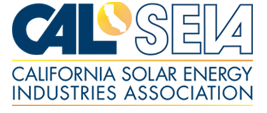|
Feed-in Tariff (FiT) Systems Still New to U.S. Renewable Energy Policy,
White Paper Suggests Best Practices for Widespread Adoption
XsunX, Inc. (OTCBB:XSNX), the developer of advanced, thin-film photovoltaic (TFPV) solar cell technologies and manufacturing processes, updates its shareholders on feed-in tariff policy in the United States and recommendations on how to properly establish these incentivized systems.
For years European countries have used a renewable energy policy called a feed-in tariff to spur investment in green forms of power like solar energy. Only recently though, has this system taken root in the U.S.
Promising producers long-term agreements for electricity produced, guaranteed grid access and preferential rates, feed-in tariffs have been adopted by a few U.S. states including California, Hawaii and Vermont while others such as Wisconsin, Michigan, and Indiana have proposed legislation.
Highlighting the benefits of this German-originated system, a white paper released last month by SEMI PV Group on solar feed-in tariffs reported that stable, transparent and substantial national feed-in tariffs will fuel rapid growth and new investments in the solar industry. SEMI also noted that 80 percent of PV demand is from countries that support FiT policies.
To view the press release announcing the white paper click here:
http://www.semi.org/en/Press/ctr_033439
The new set of public policies proposed by the PV Group are designed to propel solar energy forward and promote best practices for the creation and implementation of a solid feed-in tariff program. The practices recommended include:
- support for technology differentiation;
- generation cost-based rates;
- fair purchase and interconnection requirements;
- use of fixed-price and long-term payments;
- and the use of predictable incentive declines.
As the U.S. inches closer to adopting green technology on a mass scale, its important to remember that just one policy is not going to fuel widespread adoption rather a combination of policies including feed-in tariffs, rebates, renewable energy credits and net metering, said Tom Djokovich, CEO, XsunX.
Public policies principles suggested in the white paper include:
- stable and predictable policies to encourage private investment;
- transparent and streamlined policies to promote fair and honest outcomes;
- and open and accessible policies to enable distributed energy production.
For more information about XsunX, or to subscribe to receive weekly news about the solar industry, please visit https://xsunx.com.
For XsunX, Inc. investor relations, please call (888) 797-4527.
Safe Harbor Statement: Matters discussed in this news letter contain forward-looking statements within the meaning of the Private Securities Litigation Reform Act of 1995. When used in this press release, the words "anticipate", "believe", "estimate", "may", "intend", "expect" and similar expressions identify such forward-looking statements. Actual results, performance or achievements could differ materially from those contemplated, expressed or implied by the forward-looking statements contained herein. These forward-looking statements are based largely on the expectations of the Company and are subject to a number of risks and uncertainties. These include, but are not limited to, risks and uncertainties associated with: the impact of economic, competitive and other factors affecting the Company and its operations, markets, product, and distributor performance, the impact on the national and local economies resulting from terrorist actions, and U.S. actions subsequently; and other factors detailed in reports filed by the Company.
|
 • Pricing for best-in-class systems are at all-time lows• The 30% federal tax credit is available until 2016• Aggressive depreciation allowances are available to help your bottom line• Eliminate unknowns related to future energy costs• Convert utility expenses into asset investments
• Pricing for best-in-class systems are at all-time lows• The 30% federal tax credit is available until 2016• Aggressive depreciation allowances are available to help your bottom line• Eliminate unknowns related to future energy costs• Convert utility expenses into asset investments
